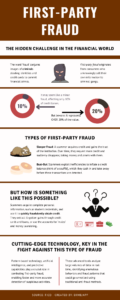The digitalisation of the banking sector is an important, necessary and unstoppable process which provides better, more secure services. Computer applications, biometric systems and enabling technology like Blockchain or Artificial Intelligence make it easier to offer the user a personalised banking experience and anticipate their needs.The COVID-19 crisis is having serious economic, social, political and financial consequences which are still difficult to assess or quantify, and this will doubtlessly have an impact on credit organisations’ profit and resources.
The lockdowns seen around the world have forced the majority of financial organisations to accelerate their digitalisation processes and implement a staggering amount of change in a very short space of time. With confinement measures and limited access to branches, banks have had to enhance their digital channels as an alternative way for people to do their banking whilst also guaranteeing quality of service, strengthening data security and preventing system overloads or outages due to the increased online demand. However, we can say that once PSD2 (the Payment Services Directive) has been fully implemented and shown to be effective, these digital channels and open banking will both come out stronger from this pandemic.
During both the confinement and subsequent de-escalation, the vast majority of the public have increased their use of online banking. According to the report “Impact of COVID-19 on the Financial Sector”, jointly produced by the Funcas Observatory of Financial Digitalisation and Finnovating, customers most commonly use online services to consult balances, check transactions, make transfers and pay bills. Some 43% of Spanish users prefer to do their banking through their bank’s mobile app, whilst around 25% opt to use the bank’s website. The least popular methods are via telephone or e-mail. At the same time, 86.5% of customers say that the online service they receive is either good or very good. Clearly, online banking has gained interest and the ability to sign up online for banking services and products has become much more popular.
At the same time, consumer habits have changed very quickly. During the crisis, people have mainly opted for card payments and are gradually abandoning cash. This is no surprise given the contradictory messages that handling cash was one of the main transmission routes for the virus, despite the fact that central banks and the WHO denied this. In any case, the news spread rapidly and had a significant impact, causing people to largely avoid using notes and coins and some businesses to recommend card payments instead. Faced with this situation, the public has opted for plastic. Spending on food shopping using card payments grew by around 60% compared to previous years as shops adapted to avoid contact with physical money. Now that consumers can more easily perceive the convenience and sense of security, it is predicted that they will continue to use cards and mobile payments much more in the future. Physical money and cash payments have been demoted, and their disappearance could be closer than we think.
Right now, the main challenges for the sector are to overcome the present economic situation, increase profitability and consolidate the digital transformation. Thus, there is a new paradigm shift regarding the digital transformation or “robotization” of the industry. If companies want to be competitive in the market, they need to be innovative, agile in their decision-making and creative when it comes to gaining advantages with new technologies, adapting services to customer needs and establishing the necessary security controls to guarantee the best service and improve the user experience.
It has been made clear during the pandemic that innovation and digital transformation in the banking and finance industries were sorely needed, but thanks to the advances made in recent years, it is now helping to provide flexible solutions and improve strategies in a quicker, more convenient and more personalised way. PSD2 (Payment Services Directive) has put the customer at the centre of the digital transformation, where they have total control of their banking data and transactions and are better protected in cases of theft or fraud. The payment relationship with the customer has been liberalised, and their data has ceased to belong to any third-party, thereby improving the user experience. As a result, the payment process is more agile and secure, and purchases are faster.
As well as the user experience, the experience for the banks themselves has also been transformed. The payment industry requires technology, data and a user experience. Customers want personalised services, offers, advice and alerts. For these to work well, service providers need to convert the wide scope of customer information into usable knowledge using tools that are capable of processing vast amounts of information and making decisions so that banks can offer customers personalised offers through their preferred channel. These algorithms will aim to decipher customers’ emotions and feelings in order to interact with them in an increasingly ‘human’ way.
For example, you might ask your smart bank about options for increasing your savings by 10% over the next two months. You might then receive an answer saying something like, “Compared to people with similar profiles, you currently spend 24% more on heating and 12% more on leisure. We recommend that you review these expenses and try to reduce them”. Another example in this new scenario could be that, when a customer makes an online purchase, the digital bank could warn about any potential payment delays or advise which card to use by looking at your balance and transactions coming up in the next few days. The reality today is that financial organisations are increasingly committed to putting the user at the centre of their business instead of the product.
AI and natural language processing are essential for providing these increasingly personalised services. By understanding their customers’ habits, banks can offer personalised services based on their actual tastes. At GDS MODELLICA, we collaborate with credit institutions and other organisations by providing intelligent decision-making solutions which are adapted to their individual needs and specific markets. We’re talking about key decisions like: “Should I approve a loan or credit card for this customer?”, or “What is the most appropriate offer for this particular customer or company?”.
Our solutions cover a range of things, from customer behaviour to other information which can be used to predict the likelihood of a purchase, generate personalised marketing campaigns, decide conditions for credit approval, assess whether an electronic transaction is fraudulent or not, establish individual strategies to recover defaults or even generate intelligence to ensure compliance with strict government regulations. We help companies to make thousands if not millions of daily decisions in an agile, precise and consistent way. And as for their customers, we help to improve their user experience, providing a highly personalised service through the use of analytic techniques relating to decision management and business intelligence.
Risk management is currently evolving at a dizzying pace, moving towards a new credit granting model with a strong tendency towards personalised service, digitalisation and a multi-channel approach. However, fraud is evolving at the same pace as technology, which means that innovation is key for staying ahead of fraudsters. Just think about how, in this environment, theft and data filtering can allow cybercriminals to have easier access to personal information and subsequently steal identities or invent virtual ones.
This new economy involves less personal interaction, which allows scammers to hide behind stolen or invented identities and open accounts to access money, goods or services that they have no intention of paying for. Applications for credit using stolen or false identities have led to a rise in defaults in many banking organisations. Strong security measures will help make purchasing processes simpler and more trustworthy, and biometrics will prevent forgery and make payments easier. Just as fingerprint, face or voice recognition can be used to unlock a mobile phone, they can also be used to access a banking app. In conclusion, now more than ever, we need to strengthen security to prevent cyberattacks and data theft, and this is why it’s vital to create standards for all providers to follow that guarantee the quality and security of their data.





